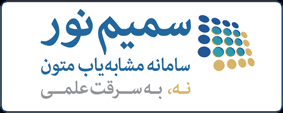Exploring the Legal Approach of the Islamic Emirate towards Child Labor in Afghanistan
DOI:
https://doi.org/10.61438/bsrqj.v2i1.45Keywords:
Child, Work, Afghanistan, System, Islamic EmirateAbstract
Children’s rights are one of the most sensitive aspects of human rights, which are emphasized in all religious and legal values. Children need the attention of the international community and the government for their growth and development. One of the violations of children’s rights is the issue of their work, which has existed for a long time, and child labor is consistently struggling with numerous challenges in Afghanistan, although throughout all the governmental periods, numerous promises have been made to guarantee the rights of child laborers to both the UN and the people of Afghanistan, but they have failed to fulfill them. Difficult circumstances compel children to do arduous deeds that have irreparable consequences for them. Considering the importance of children's rights in Afghanistan, which have been dominated by decades of war and economic poverty, with the formation of the new Islamic Emirate government, the question arises: what is the current legal approach of the Islamic Emirate system to child labor? Apparently, the current approach of the Islamic Emirate system towards child labor includes actions to protect children’s right, but there is no specific law regarding child labor. The aim of the study is to examine the current approach of the Afghan legal system to child labor. The research method is library-method, utilizing tools such as books, scientific and research articles, sharia, and social reports. Research findings indicate that the Islamic Emirate system is currently attempting to align issues related to child labor with the principles of Sharia law. However, formal and specific laws in this regard are not yet being enforced, and the life of child labor in Afghanistan is becoming increasingly dire day by day, leading to the persistence of vulnerabilities associated with child labor.
References
Afghanistan National Child Labor Strategy and Action Plan 2018-2030. International Labour Organization, pp. 8.
BBC. (2023). World Day Against Child Labour. Retrieved on 5/1/1403 from: https://www.bbc.com/persian/articles/cgledl6x7mgo
Beigi, J. (2005). Children in the Law of Iran. First Edition. Tehran: Mizan Publications.
CWB. (2020). Child Labor in Afghanistan. Retrieved March 26, 2024, from: https://childrenwithoutborders.ca/child-labour-in-afghanistan/#:~:text=Countless%20children%20in%20Afghanistan%20work,selling%20items%20on%20the%20streets.
Hamraz, H. (2018). Rape, Violence, and Disability; The Painful Condition of Afghan Child Workers. Retrieved on 17/1/1403 from: https://www.dw.com/faaf/%D8%AA%D8%AC%D8%A7%D9%88%D8%B2%D8%AED8%B4%D9%88%D9%86%D8%AA%D9%88%D9%85%D8%B9%DB%8C%D9%88%D88C%D8%AA%D9%88%D8%B6%D8%B9%DB%8C%D8%AA%D8%AF%D8%B1%D8%AF%-%DA%A9%D9%88%D8%AF%DA%A9%D8%A7%D9%86%DA%A9%D8%A7%D8%B1-%D8%A7%D9%81%D8%BA%D8%A7%D9%86%D8%B3%D8%AA%D8%A7%D9%86/a-43237130
Hasrat, A. S., & Salehi, Z. (2023). One out of Every Five Children in Afghanistan Works. Retrieved on 10/1/1403 from: https://pajhwok.com/fa/2023/11/20/one-out-of-every-five-children-in-afghanistan-works/?amp=1
ILO. (2018). What is Child Labor. Retrieved March 19, 2024, from: https://www.ilo.org/ipec/facts/lang--en/index.htm
International Labor Organization. (1999). Worst Forms of Child Labor Convention, 1999 (No. 182).
Johansson, J. (2009). Causes of Child Labor: A Case Study in Babati Down, Tanzania. Södertörn University College, School of Life Sciences, Bachelor’s Thesis 15 ECTS, p. 1.
Legal and Research Organization. (1869). Al-Ahkam Journal.
Momen, N. (2020). Child Labor: History, Process, and Consequences. In Encyclopedia of the UN Sustainable Development Goals, 1st ed., Chapter: No Poverty, pp. 1-8. Springer.
Moqaddam, M. H., Mollaft, H., & Hezbawi, H. (2021). An Investigation into the Formation Process and Consequences of Street Children Workers in Ahvaz City. Urban Sociology Studies, No. 43, Vol. 12.
Mousavi Bojnourdi, S. M. (2003). Investigating the Concept and Criteria of Childhood in Islamic Thought and Iranian Laws. Matin Research Journal, No. 21, Vol. 5, pp. 27-60.
National Constitution. (2003). No. 818.
National Convention on Child Rights. (1997). No. 1330.
Nazari Tavakoli, S., & Mosleh, M. S. (2017). The Concept of Puberty and Its Different Responsibilities in Islamic Jurisprudence. Comparative Jurisprudence Quarterly, No. 11, Vol. 6, pp. 175-193.
Pajhwok Afghan News. (2023). "One out of Every Five Children in Afghanistan Works." Retrieved on 10/1/1403 from: https://pajhwok.com/fa/2023/11/20/one-out-of-every-five-children-in-afghanistan-works/?amp=1
Qadr Khan, S. (2021). Afghanistan: One Year After the Taliban; Children’s Condition from Bad to Catastrophic. Retrieved on 10/1/1403 from: https://iranwire.com/fa/features/106612%D8%A7%D9%81%D8%BA%D8%A7%D9%86%%D8%AC%D8%B9%D9%87-%D8%AA%D8%A8%D8%AF%DB%8C%D9%84-%D8%B4%D8%AF/
Rules of the Islamic Emirate. (2021).
Save the Children. (2023). Ban of Female Workers Could Push Afghan Children Back into Work. Retrieved March 26, 2024, from: https://www.savethechildren.net/news/ban-female-aid-workers-could-push-afghan-children-back-work
Sim, A. (2009). Confronting Child Labour in Afghanistan. Afghanistan Research and Evaluation Unit.
The United Nations General Assembly. (1959). Declaration of the Rights of the Child.
The United Nations. (1966). International Covenant on Economic, Social and Cultural Rights.
The United Nations. (1990). Convention on the Rights of the Child.
United States Department of Labor. (2021). Child Labor and Forced Labor Reports. Retrieved March 22, 2024, from: https://www.dol.gov/agencies/ilab/resources/reports/child-labor/afghanistan
Zandrazavi, S., & Rahimi Pouranaki, N. (2011). A Comparison of the Status of Working Children in Iran and Afghanistan in Kerman Province Based on the Four Principles of the Child Rights Scale. Journal of Iranian Social Studies, No. 1, Vol. 5.
Zishegaran, M., & Hajideh Abadi, D. M. A. (2018). A Study of Victimology of Working Children. Legal Science Quarterly, No. 8, Vol. 2, pp. 477-506.
Zohaili, W. (1985). Islamic Jurisprudence and Its Proofs. 2nd ed. Damascus, Syria: Dar al-Fikr.







